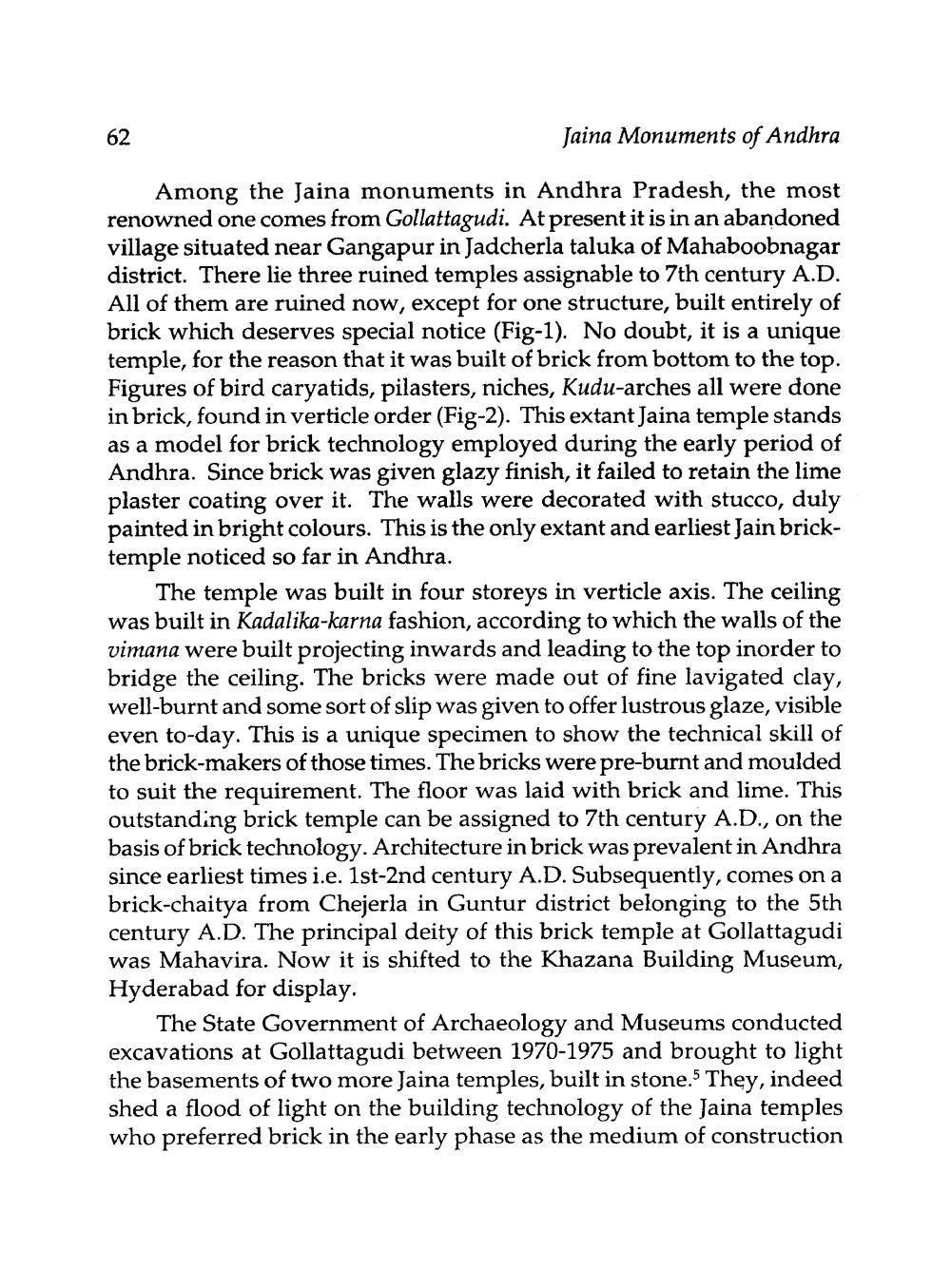________________
Jaina Monuments of Andhra
Among the Jaina monuments in Andhra Pradesh, the most renowned one comes from Gollattagudi. At present it is in an abandoned village situated near Gangapur in Jadcherla taluka of Mahaboobnagar district. There lie three ruined temples assignable to 7th century A.D. All of them are ruined now, except for one structure, built entirely of brick which deserves special notice (Fig-1). No doubt, it is a unique temple, for the reason that it was built of brick from bottom to the top. Figures of bird caryatids, pilasters, niches, Kudu-arches all were done in brick, found in verticle order (Fig-2). This extant Jaina temple stands as a model for brick technology employed during the early period of Andhra. Since brick was given glazy finish, it failed to retain the lime plaster coating over it. The walls were decorated with stucco, duly painted in bright colours. This is the only extant and earliest Jain bricktemple noticed so far in Andhra.
62
The temple was built in four storeys in verticle axis. The ceiling was built in Kadalika-karna fashion, according to which the walls of the vimana were built projecting inwards and leading to the top inorder to bridge the ceiling. The bricks were made out of fine lavigated clay, well-burnt and some sort of slip was given to offer lustrous glaze, visible even to-day. This is a unique specimen to show the technical skill of the brick-makers of those times. The bricks were pre-burnt and moulded to suit the requirement. The floor was laid with brick and lime. This outstanding brick temple can be assigned to 7th century A.D., on the basis of brick technology. Architecture in brick was prevalent in Andhra since earliest times i.e. 1st-2nd century A.D. Subsequently, comes on a brick-chaitya from Chejerla in Guntur district belonging to the 5th century A.D. The principal deity of this brick temple at Gollattagudi was Mahavira. Now it is shifted to the Khazana Building Museum, Hyderabad for display.
The State Government of Archaeology and Museums conducted excavations at Gollattagudi between 1970-1975 and brought to light the basements of two more Jaina temples, built in stone.5 They, indeed shed a flood of light on the building technology of the Jaina temples who preferred brick in the early phase as the medium of construction




